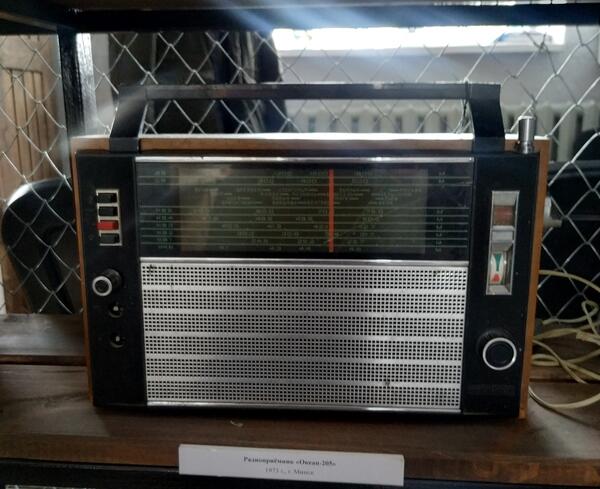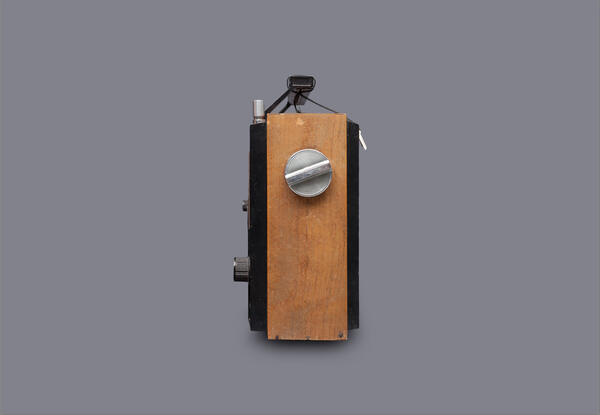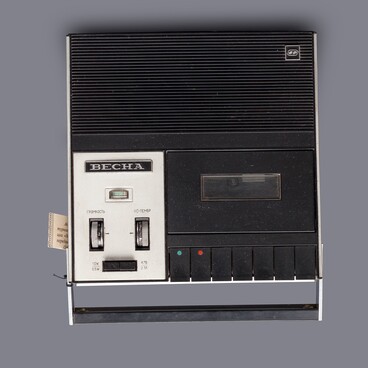The range of the Okean radio receivers dates back to 1967 when the Riga State Electrical Engineering Factory (VEF) developed two models of radio receivers — the mass-market VEF-12 and the improved VEF-17 which was distinguished by having an ultra-short-wave frequency band.
The latter was eventually manufactured at the Minsk Radio Factory of the 50th Anniversary of Belorussia’s Communist Party, where its slightly upgraded version was released under the Okean brand. The first batch went on sale in 1969.
The Okean-205 portable radio was manufactured at the Minsk Radio Factory between 1973 and 1976, with the shape of the logo and the scale design varying from year to year. The receiver cost 145 rubles which was just under one and a half salaries of a Soviet engineer.
Concurrently with the 205th model, the Okean-204 was made (differing in that it had no signal level indicator). The simplified design meant that the price was six rubles lower. In 1976, the Okean-209 was launched, and the last Okean-205 cases that were by then supposedly left in stock at the factory were to be assembled based on the Okean-209 circuitry.
The Okean-205 could receive radio stations in the long-wave, medium-wave, short-wave frequency bands and in the Soviet standard ultra-short wave frequency band (65…75 MHz). The radio weighed four kilograms. Export versions of the receiver were branded as the Selena-205. Those were provided with a European standard ultra-short-wave band (88…108 MHz) and had their tuning scale backlit.
In the ultra-short wave frequency band, automatic frequency control was available. The receiver had sound tone controls for high and low frequencies, a fine-tuning dial indicator, and a power supply indication. Output power was 0.5W, and maximum power 0.75W. Power could be supplied both from the mains 127/220V and from six D-type batteries.
The radio receiver was assigned the second complexity class as per GOST. The classification was based on the comparative evaluation of electrical and acoustic characteristics. Given their performance and average price, class two receivers offered the best overall value-for-money ratio.
The latter was eventually manufactured at the Minsk Radio Factory of the 50th Anniversary of Belorussia’s Communist Party, where its slightly upgraded version was released under the Okean brand. The first batch went on sale in 1969.
The Okean-205 portable radio was manufactured at the Minsk Radio Factory between 1973 and 1976, with the shape of the logo and the scale design varying from year to year. The receiver cost 145 rubles which was just under one and a half salaries of a Soviet engineer.
Concurrently with the 205th model, the Okean-204 was made (differing in that it had no signal level indicator). The simplified design meant that the price was six rubles lower. In 1976, the Okean-209 was launched, and the last Okean-205 cases that were by then supposedly left in stock at the factory were to be assembled based on the Okean-209 circuitry.
The Okean-205 could receive radio stations in the long-wave, medium-wave, short-wave frequency bands and in the Soviet standard ultra-short wave frequency band (65…75 MHz). The radio weighed four kilograms. Export versions of the receiver were branded as the Selena-205. Those were provided with a European standard ultra-short-wave band (88…108 MHz) and had their tuning scale backlit.
In the ultra-short wave frequency band, automatic frequency control was available. The receiver had sound tone controls for high and low frequencies, a fine-tuning dial indicator, and a power supply indication. Output power was 0.5W, and maximum power 0.75W. Power could be supplied both from the mains 127/220V and from six D-type batteries.
The radio receiver was assigned the second complexity class as per GOST. The classification was based on the comparative evaluation of electrical and acoustic characteristics. Given their performance and average price, class two receivers offered the best overall value-for-money ratio.






